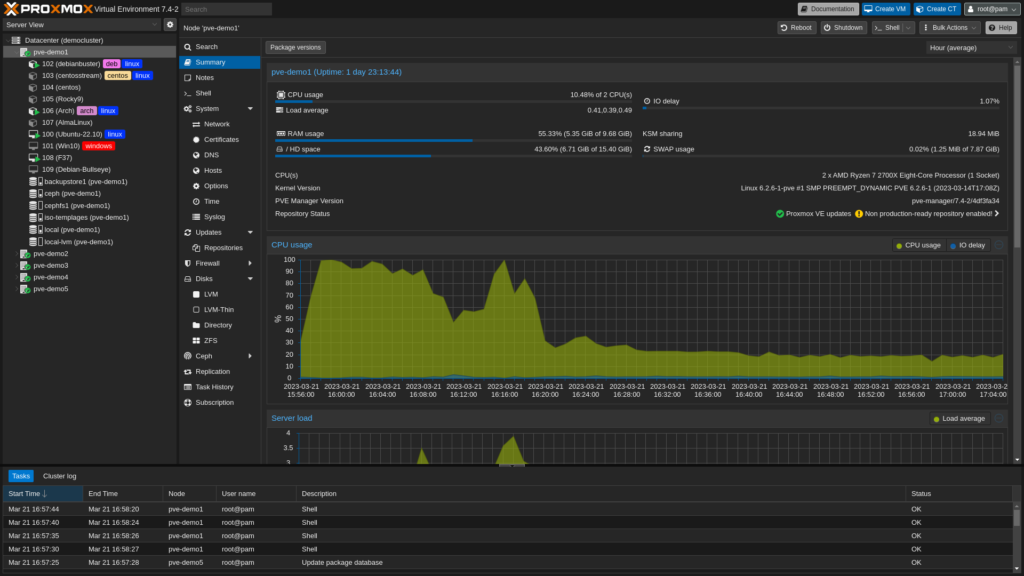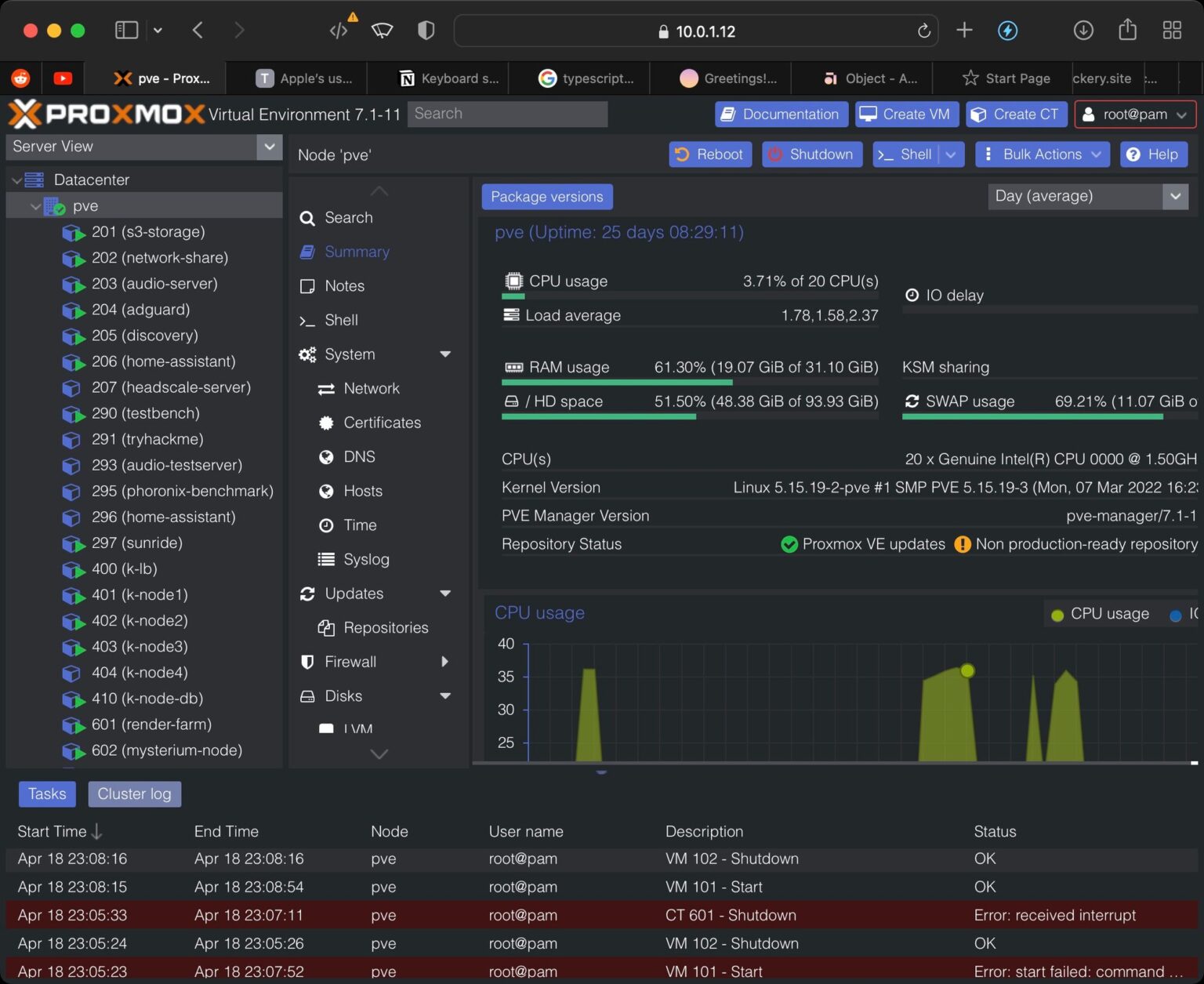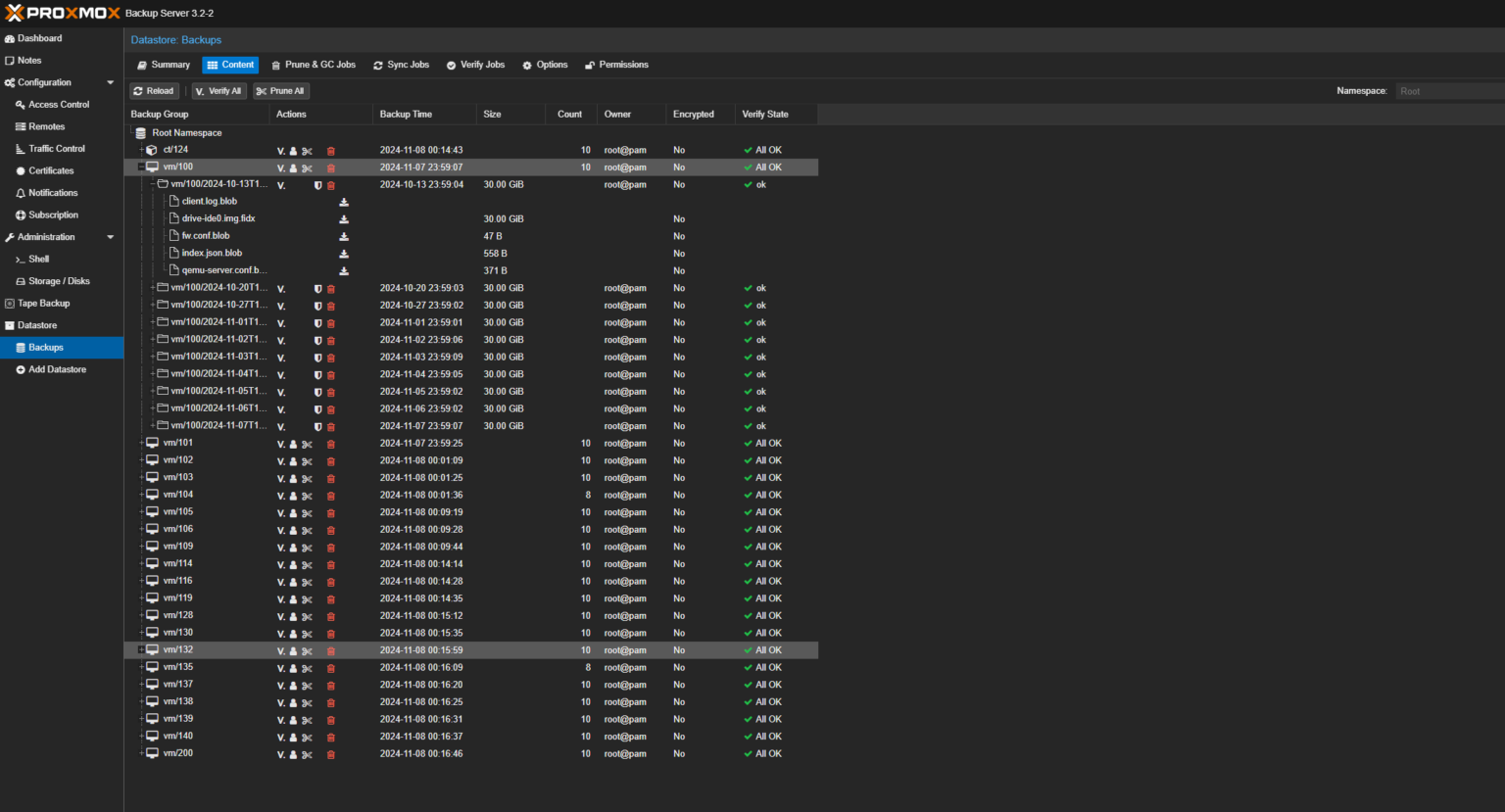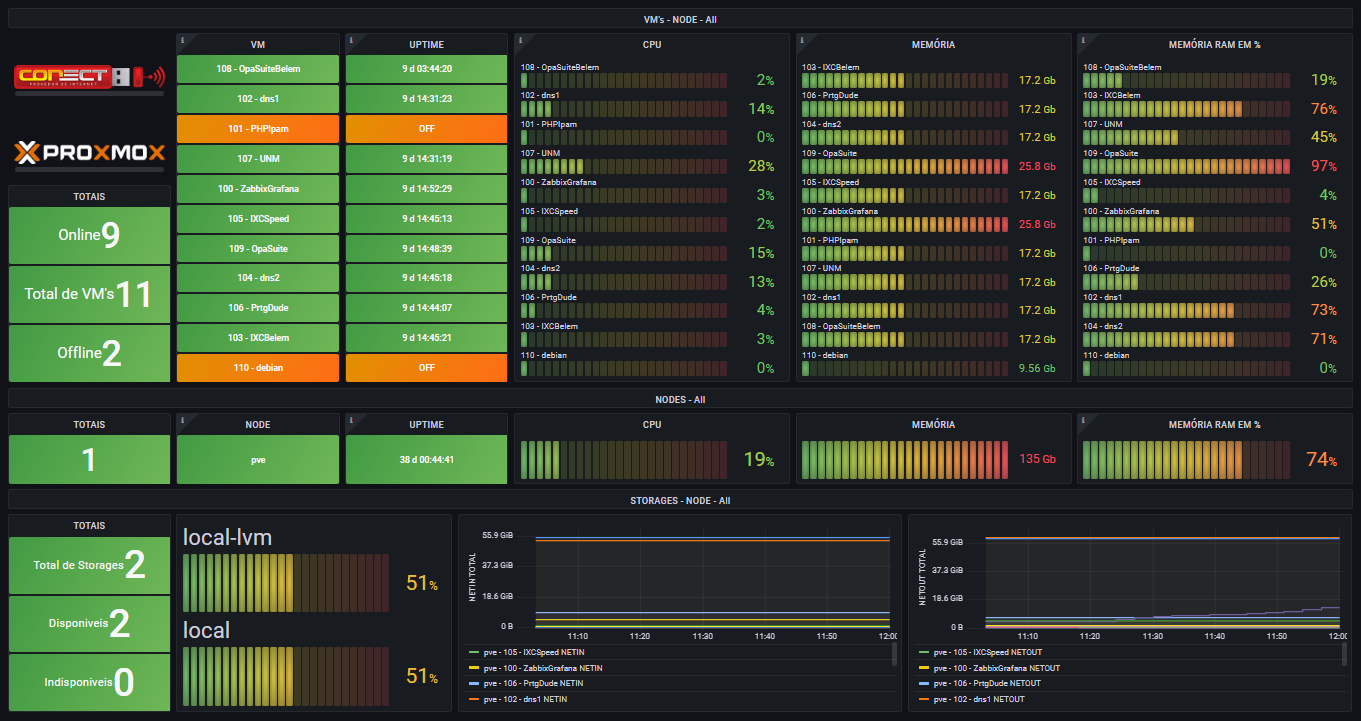The Benefits of Using Proxmox for Virtualization
In the world of IT infrastructure, virtualization has become an essential tool for maximizing resources, improving scalability, and simplifying management. Among the many options available for virtualization platforms, Proxmox VE (Virtual Environment) stands out as a powerful, open-source solution that combines ease of use with advanced features. Whether you’re running a small lab setup or managing a production environment, Proxmox offers numerous advantages that can help streamline your virtualized infrastructure. In this post, we’ll explore the key benefits of using Proxmox for virtualization.

1. Comprehensive Virtualization Support
Proxmox is a hyper-converged solution that supports both KVM (Kernel-based Virtual Machine) for virtual machines (VMs) and LXC (Linux Containers) for lightweight container-based virtualization. This dual support means that Proxmox offers unparalleled flexibility, allowing users to run both virtual machines and containers side by side within the same system.
- KVM Virtual Machines: Proxmox uses KVM, a robust, enterprise-grade hypervisor built into the Linux kernel. KVM allows you to run full-featured, isolated virtual machines on top of Linux with near-native performance.
- LXC Containers: For lightweight virtualization, Proxmox supports LXC containers, which allow for the creation of multiple isolated environments with less overhead compared to full VMs. This makes LXC an excellent choice for running applications or microservices.
With this combination, Proxmox is ideal for a wide range of use cases—from running legacy applications in virtual machines to deploying modern microservices in containers.
2. Open-Source and Cost-Effective
Proxmox VE is an open-source platform, which means it is free to use and there are no licensing fees involved. The fact that it’s open-source also means that Proxmox is highly customizable, and the community-driven development ensures that bugs and issues are swiftly addressed.
For businesses or individuals on a budget, this is a major advantage. With Proxmox, you can set up a full-featured virtualization environment without the significant upfront costs associated with proprietary solutions like VMware vSphere or Microsoft Hyper-V. Proxmox also offers optional paid support, making it suitable for both personal and professional use cases.

3. Unified Web Interface for Simplified Management
One of the standout features of Proxmox is its web-based management interface. The Proxmox GUI (Graphical User Interface) provides a simple and intuitive way to manage your virtual machines, containers, and storage. You can perform common tasks like:
- Creating and managing virtual machines and containers.
- Monitoring system performance (CPU, memory, disk usage, etc.).
- Configuring network and storage settings.
With Proxmox’s unified interface, administrators can efficiently manage multiple nodes, clusters, and resources without needing to rely on multiple tools or command-line utilities. This ease of use makes it an attractive option for those who may not be experts in virtualization technology but still want a feature-rich solution.
4. Powerful Storage Integration
Proxmox offers flexible and powerful storage options that can be easily integrated into your virtualization environment. Whether you’re using local disks, network-attached storage (NAS), or storage area networks (SAN), Proxmox supports various storage backends including:
- LVM (Logical Volume Management).
- ZFS (Zettabyte File System).
- Ceph for distributed storage.
- NFS and iSCSI.
Proxmox’s ZFS integration is particularly noteworthy. ZFS is a robust, self-healing file system that provides data integrity, compression, and snapshot capabilities—ideal for backing up and recovering data in virtualized environments. Combined with Proxmox’s powerful storage management tools, administrators can create highly available and scalable storage architectures.
5. High Availability and Clustering
For organizations that require uptime and reliability, Proxmox supports high availability (HA) and clustering. Proxmox clusters allow multiple nodes (servers) to be linked together, enabling resource pooling and failover capabilities.
In the event of a hardware failure, Proxmox’s HA features ensure that virtual machines and containers are automatically restarted on another node in the cluster. This provides fault tolerance and helps maintain the availability of critical services.
Moreover, Proxmox integrates well with Corosync and Pacemaker for advanced clustering features, making it suitable for production environments that require high availability.

6. Backup and Restore with Proxmox Backup Server
Proxmox includes a powerful backup solution for both virtual machines and containers. With Proxmox Backup Server, users can efficiently back up and restore entire virtual machines, containers, or individual disk images with incremental backups. This significantly reduces the backup window and storage requirements by only backing up changed data.
Proxmox Backup Server provides:
- Efficient incremental backups.
- Data deduplication to save storage space.
- Encryption for secure backups.
This robust backup solution gives administrators peace of mind that critical data is safe and can be restored quickly in case of an emergency.

7. Cross-Platform Compatibility and API Access
Proxmox is based on Linux, but it can run on most hardware platforms and supports cross-platform integration with other systems and services. Whether you’re running it on x86 servers or ARM-based hardware, Proxmox is highly adaptable.
Additionally, Proxmox provides an extensive API that allows for programmatic access to its features, making it easier to integrate Proxmox with existing automation tools or custom applications.
8. Community and Support
As an open-source project, Proxmox benefits from a strong, active community of users, developers, and contributors. The community provides invaluable support via forums, mailing lists, and extensive documentation.
For enterprises that need professional support, Proxmox offers paid support plans, ensuring you can get assistance from the Proxmox team if required. The Proxmox support team is known for their prompt and effective assistance, which makes it an excellent option for businesses looking for reliable, long-term support.
9. Scalability and Flexibility
Proxmox is not only suited for small environments but also scales well for larger infrastructures. You can start with a single node and expand your environment to a full-fledged cluster, adding more nodes and resources as your business grows. Proxmox’s ability to support large clusters and manage thousands of virtual machines ensures that it remains a viable solution for companies of all sizes.
Conclusion
Proxmox VE is a feature-packed, open-source virtualization platform that offers powerful, cost-effective, and flexible solutions for managing virtual machines and containers. From its dual support for KVM and LXC to its robust storage integration, high availability, and backup solutions, Proxmox provides everything you need to build and maintain a reliable virtualized infrastructure.
Whether you are an IT professional looking to deploy a highly available cluster, a small business seeking a cost-effective solution, or a hobbyist exploring virtualization, Proxmox has the features, performance, and community support to meet your needs.
If you haven’t already, give Proxmox a try and see how it can simplify your virtualization journey!

